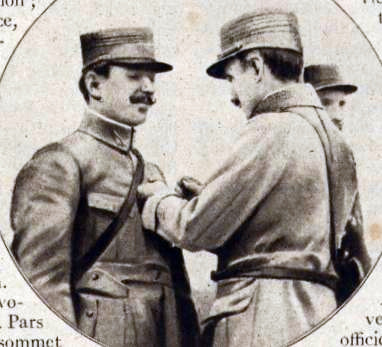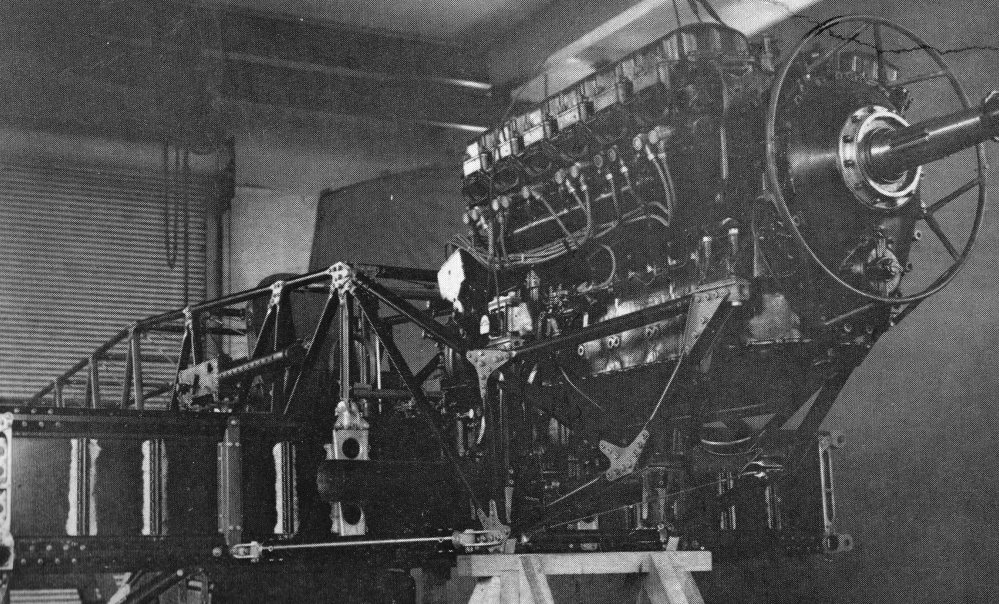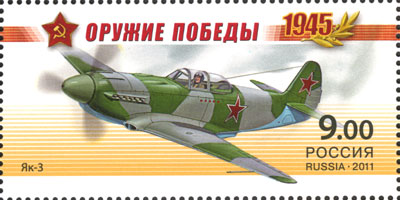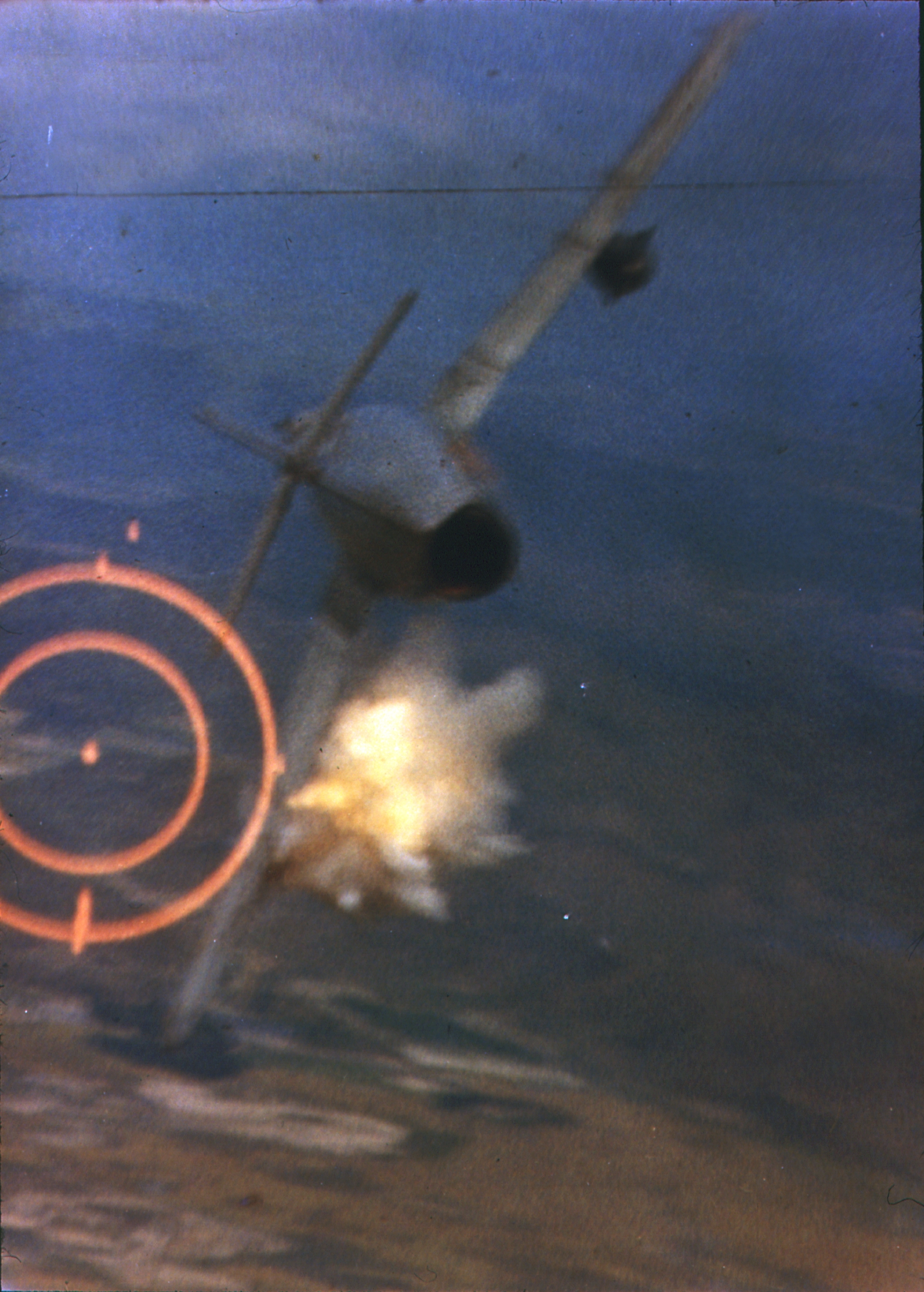|
Konstantin Krasavin
Lieutenant Colonel Konstantin Alekseyevich Krasavin (russian: Константин Алексеевич Красавин) (May 20, 1917 – January 18, 1988) was a Russian flying ace and fighter pilot of the Great Patriotic War, during which he flew for the Soviet air forces. He is credited with 376 sorties, 106 dogfights and 21 kills between 1941 and 1945 on the Eastern Front, piloting the Yakovlev Yak-3, the Lavochkin La-5, the Yakovlev Yak-7 and the Hawker Hurricane during which time he held the rank of Major. He was awarded the title of Hero of the Soviet Union along with the Order of Lenin for military valour in 1946 by the Presidium of the Supreme Soviet, retiring from military service in 1955. His citation for his Gold Star medal read that "wherever Comrade Krasavin is with his group of fighters, there is victory over the enemy". Early life and enlistment Krasavin was born in what is now the suburbs of Moscow, in the settlement of Tsaritsyno-Dachnoe in the then-Russian Re ... [...More Info...] [...Related Items...] OR: [Wikipedia] [Google] [Baidu] |
Moscow Governorate
Moscow Governorate (russian: Московская губерния; pre-reform Russian: ), or the Government of Moscow, was an administrative division (a '' guberniya'') of the Tsardom of Russia, the Russian Empire, and the Russian SFSR, which existed in 1708–1929. Administrative division Moscow Governorate consisted of 13 uyezds (their administrative centres in brackets): * Bogorodsky Uyezd (Bogorodsk/Noginsk) * Bronnitsky Uyezd (Bronnitsy) * Vereysky Uyezd (Vereya) * Volokolamsky Uyezd ( Volokolamsk) * Dmitrovsky Uyezd ( Dmitrov) * Zvenigorodsky Uyezd ( Zvenigorod) * Klinsky Uyezd ( Klin) * Kolomensky Uyezd ( Kolomna) * Mozhaysky Uyezd (Mozhaysk) * Moskovsky Uyezd (Moscow) * Podolsky Uyezd ( Podolsk) * Ruzsky Uyezd ( Ruza) * Serpukhovsky Uyezd ( Serpukhov) History Moscow Governorate, together with seven other governorates, was established on , 1708, by Tsar Peter the Great's edict. [...More Info...] [...Related Items...] OR: [Wikipedia] [Google] [Baidu] |
Flying Ace
A flying ace, fighter ace or air ace is a military aviator credited with shooting down five or more enemy aircraft during aerial combat. The exact number of aerial victories required to officially qualify as an ace is varied, but is usually considered to be five or more. The concept of the "ace" emerged in 1915 during World War I, at the same time as aerial dogfighting. It was a propaganda term intended to provide the home front with a cult of the hero in what was otherwise a war of attrition. The individual actions of aces were widely reported and the image was disseminated of the ace as a chivalrous knight reminiscent of a bygone era. For a brief early period when air-to-air combat was just being invented, the exceptionally skilled pilot could shape the battle in the skies. For most of the war, however, the image of the ace had little to do with the reality of air warfare, in which fighters fought in formation and air superiority depended heavily on the relative availabili ... [...More Info...] [...Related Items...] OR: [Wikipedia] [Google] [Baidu] |
Order Of Lenin
The Order of Lenin (russian: Орден Ленина, Orden Lenina, ), named after the leader of the Russian October Revolution, was established by the Central Executive Committee on April 6, 1930. The order was the highest civilian decoration bestowed by the Soviet Union. The order was awarded to: * Civilians for outstanding services rendered to the State * Members of the armed forces for exemplary service * Those who promoted friendship and cooperation between people and in strengthening peace * Those with meritorious services to the Soviet state and society From 1944 to 1957, before the institution of a specific length of service medals, the Order of Lenin was also used to reward 25 years of conspicuous military service. Those who were awarded the titles "Hero of the Soviet Union" and " Hero of Socialist Labour" were also given the order as part of the award. It was also bestowed on cities, companies, factories, regions, military units, and ships. Various educational institut ... [...More Info...] [...Related Items...] OR: [Wikipedia] [Google] [Baidu] |
Major
Major ( commandant in certain jurisdictions) is a military rank of commissioned officer status, with corresponding ranks existing in many military forces throughout the world. When used unhyphenated and in conjunction with no other indicators, major is one rank above captain, and one rank below lieutenant colonel. It is considered the most junior of the field officer ranks. Background Majors are typically assigned as specialised executive or operations officers for battalion-sized units of 300 to 1,200 soldiers while in some nations, like Germany, majors are often in command of a company. When used in hyphenated or combined fashion, the term can also imply seniority at other levels of rank, including ''general-major'' or ''major general'', denoting a low-level general officer, and '' sergeant major'', denoting the most senior non-commissioned officer (NCO) of a military unit. The term ''major'' can also be used with a hyphen to denote the leader of a military band su ... [...More Info...] [...Related Items...] OR: [Wikipedia] [Google] [Baidu] |
Hawker Hurricane
The Hawker Hurricane is a British single-seat fighter aircraft of the 1930s–40s which was designed and predominantly built by Hawker Aircraft Ltd. for service with the Royal Air Force (RAF). It was overshadowed in the public consciousness by the Supermarine Spitfire during the Battle of Britain in 1940, but the Hurricane inflicted 60 percent of the losses sustained by the Luftwaffe in the campaign, and fought in all the major theatres of the Second World War. The Hurricane originated from discussions between RAF officials and aircraft designer Sir Sydney Camm about a proposed monoplane derivative of the Hawker Fury biplane in the early 1930s. Despite an institutional preference for biplanes and lack of interest by the Air Ministry, Hawker refined their monoplane proposal, incorporating several innovations which became critical to wartime fighter aircraft, including retractable landing gear and the more powerful Rolls-Royce Merlin engine. The Air Ministry ordered Hawk ... [...More Info...] [...Related Items...] OR: [Wikipedia] [Google] [Baidu] |
Yakovlev Yak-7
The Yakovlev Yak-7 (russian: Яковлев Як-7) was developed from the earlier Yak-1 fighter, initially as a trainer but converted into a fighter. As both a fighter and later reverting to its original training role, the Yak-7 proved to be a capable aircraft and was well liked by air crews. The Yak-7 was simpler, tougher and generally better than the Yak-1.Taylor 1985, p. 122. Design and development In 1939, Alexander Yakovlev designed a tandem-seat advanced trainer, originally designated "I-27" and then "UTI-26", offered along with the original I-26 proposal that became the Yak-1. The "UTI" (''Uchebno Trenirovochnyi Istrebitel'', translated as: Training Fighter) was intended to give pilots-in-training experience on a high-performance aircraft before transitioning to a fighter. With development work started in 1940, the UTI-26 differed from its predecessor in its larger span wing being placed farther back for balance as well as having two cockpits with dual controls and a ... [...More Info...] [...Related Items...] OR: [Wikipedia] [Google] [Baidu] |
Lavochkin La-5
The Lavochkin La-5 (Лавочкин Ла-5) was a Soviet fighter aircraft of World War II. It was a development and refinement of the LaGG-3, replacing the earlier model's inline engine with the much more powerful Shvetsov ASh-82 radial engine. During its time in service, it was one of the Soviet Air Force's most capable types of warplane, able to fight German designs on an equal footing. Development The La-5 descended from the LaGG-1 and LaGG-3, aircraft designed by Vladimir Gorbunov before the Second World War. The LaGG-1 was underpowered, and the LaGG-3 - with a lighter airframe and a stronger engine did not solve the problem. By early 1942, the LaGG-3's shortcomings led to Lavochkin falling out of Joseph Stalin's favour, and LaGG-3 factories converting to Yakovlev Yak-1 and Yak-7 production. During the winter of 1941–1942, Lavochkin worked unofficially to improve the LaGG-3. Design work was conducted in a small hut beside an airfield. In early 1942, Gorbunov repl ... [...More Info...] [...Related Items...] OR: [Wikipedia] [Google] [Baidu] |
Yakovlev Yak-3
The Yakovlev Yak-3 ( Russian: Яковлев Як-3) was a single-engine, single-seat World War II Soviet fighter. Robust and easy to maintain, it was much liked by both pilots and ground crew.Glancey 2006, p. 180. One of the smallest and lightest combat fighters fielded by any combatant during the war, its high power-to-weight ratio gave it excellent performance and it proved to be a formidable dogfighter. Origins The origins of the Yak-3 went back to 1941 when the I-30 prototype was offered along with the I-26 (Yak-1) as an alternative design. The I-30, powered by a Klimov M-105P engine, was of all-metal construction, using a wing with dihedral on the outer panels. Like the early Yak-1, it had a ShVAK cannon firing through the hollow-driveshaft nose spinner as a ''motornaya pushka'' (моторная пушка - Literally: 'Motor Cannon'), twin synchronized ShKAS machine guns in cowling mounts and a ShVAK cannon in each wing. During the Battle of Stalingrad, Luftw ... [...More Info...] [...Related Items...] OR: [Wikipedia] [Google] [Baidu] |
Eastern Front (World War II)
The Eastern Front of World War II was a Theater (warfare), theatre of conflict between the European Axis powers against the Soviet Union (USSR), Polish Armed Forces in the East, Poland and other Allies of World War II, Allies, which encompassed Central Europe, Eastern Europe, Northern Europe, Northeast Europe (Baltic states, Baltics), and Southeast Europe (Balkans) from 22 June 1941 to 9 May 1945. It was known as the Great Patriotic War (term), Great Patriotic War in the Soviet Union – and still is in some of its successor states, while almost everywhere else it has been called the ''Eastern Front''. In present-day German and Ukrainian historiography the name German-Soviet War is typically used. The battles on the Eastern Front of the Second World War constituted the largest military confrontation in history. They were characterised by unprecedented ferocity and brutality, wholesale destruction, mass deportations, and immense loss of life due to combat, starvation, expos ... [...More Info...] [...Related Items...] OR: [Wikipedia] [Google] [Baidu] |
Timeline Of World War II (1945)
This is a list of timelines of events over the period of World War II. Main timelines World War II * Timeline of World War II (1939) * Timeline of World War II (1940) * Timeline of World War II (1941) * Timeline of World War II (1942) * Timeline of World War II (1943) * Timeline of World War II (1944) * Timeline of World War II (1945) Wars, campaigns, and battles * Timeline of the invasion of Poland (1939) * Timeline of the Battle of France (1939–1940) * Timeline of the Battle of the Atlantic (1939–1945) * Timeline of the Winter War (1939–1940) * Timeline of the Norwegian Campaign (1940) * North African campaign timeline, Timeline of the North African Campaign (1940–1943) * Timeline of the Eastern Front of World War II (1941–1945) Others * Declarations of war during World War II, Timeline of declarations of war during World War II * Timeline of the United Kingdom home front during World War II (1939–1945) * Timeline of the Molotov–Ribbentrop Pact (1918–1941 ... [...More Info...] [...Related Items...] OR: [Wikipedia] [Google] [Baidu] |
Timeline Of World War II (1941)
This is a timeline of events that stretched over the period of World War II in 1941, marked also by the beginning of Operation Barbarossa on the Eastern Front. January *1: Accounting of the previous night's bombing of London reveals that the Old Bailey, the Guildhall, and eight churches by Christopher Wren were destroyed or badly damaged.: RAF bombs aircraft factories in Bremen, Germany. *2: German bombers, perhaps off course, bomb Ireland for the second night in a row. *2–4: Bardia is bombed by British bombers and bombarded by naval vessels off shore. *3: RAF bombers attack Bremen and the Kiel Canal in Germany. The Kiel Canal Bridge suffers a direct hit and collapses on Finnish ship ''Yrsa''. *5: Operation Compass: Australian troops of XIII Corps (the re-designated Western Desert Force) capture Italian-held Bardia and 45,000 Italian prisoners are taken.: Tobruk, the next target, is 70 miles away. : The leader of Wallonia's fascist party, Léon Degrelle, gives a s ... [...More Info...] [...Related Items...] OR: [Wikipedia] [Google] [Baidu] |
Dogfight
A dogfight, or dog fight, is an aerial battle between fighter aircraft conducted at close range. Dogfighting first occurred in Mexico in 1913, shortly after the invention of the airplane. Until at least 1992, it was a component in every major war, though with steadily declining frequency. Since then, longer-range weapons have made dogfighting largely obsolete. Modern terminology for air-to-air combat is air combat maneuvering (ACM), which refers to tactical situations requiring the use of individual basic fighter maneuvers (BFM) to attack or evade one or more opponents. This differs from aerial warfare, which deals with the strategy involved in planning and executing various missions. Etymology The term ''dogfight'' has been used for centuries to describe a melee: a fierce, fast-paced close quarters battle between two or more opponents. The term gained popularity during World War II, although its origin in air combat can be traced to the latter years of World War I. One o ... [...More Info...] [...Related Items...] OR: [Wikipedia] [Google] [Baidu] |








